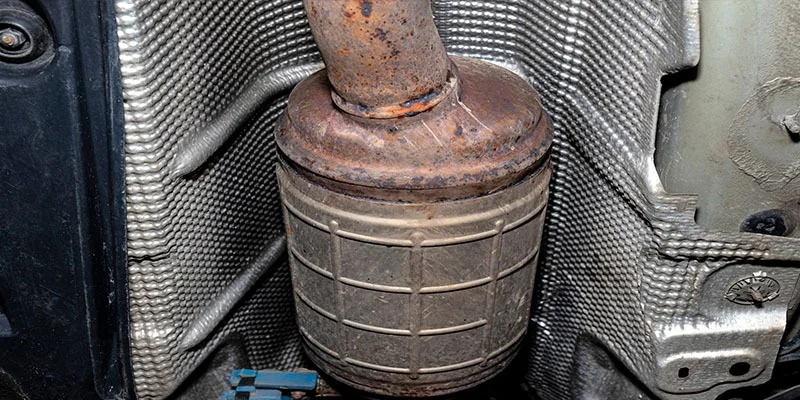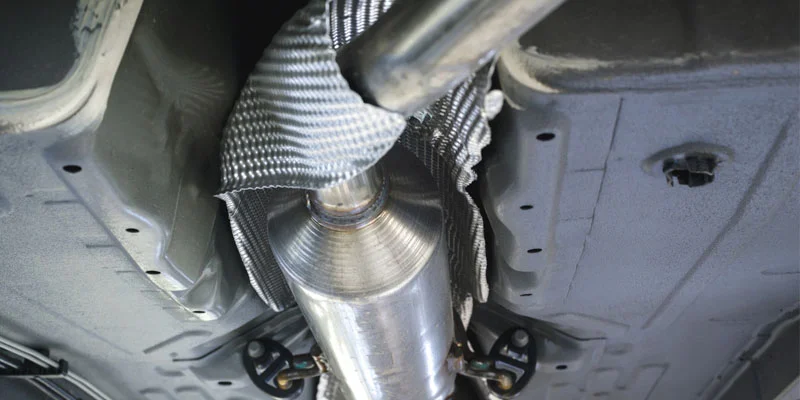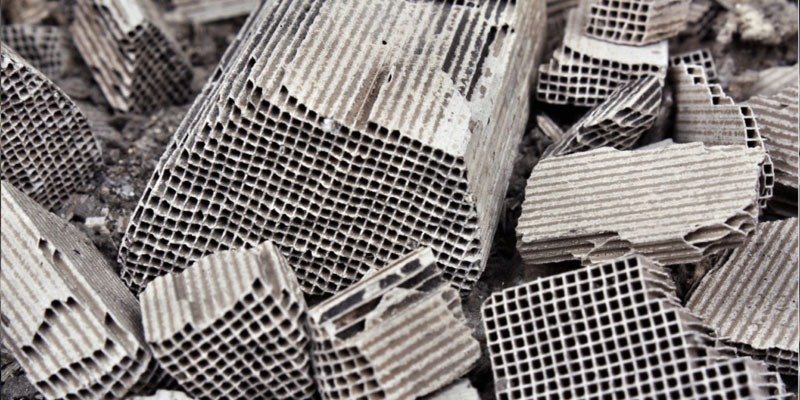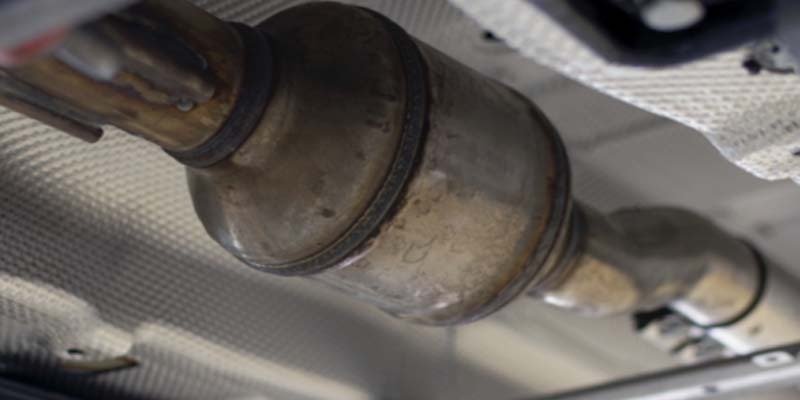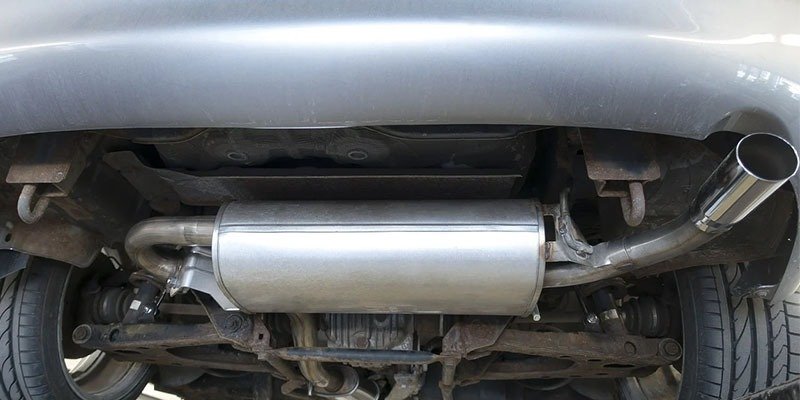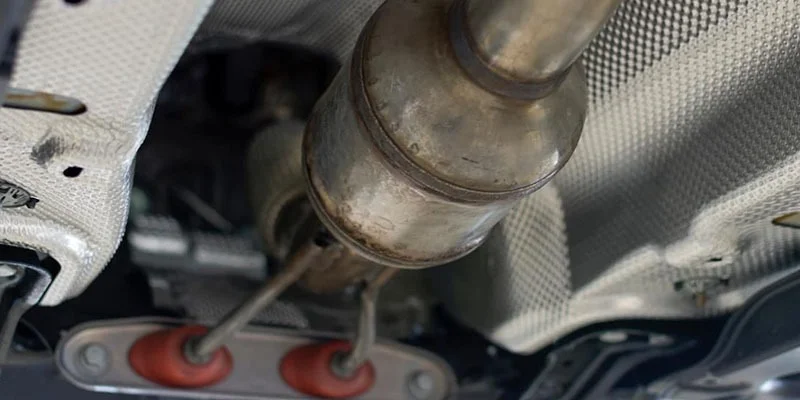Have you ever seen your car suddenly stall while accelerating and smoking heavily from the tailpipe? It could be a blocked catalytic converter disrupting engine flow.
The catalytic converter is one of the most important components of any car. Its main function is to reduce harmful gases from the engine, like carbon monoxide, hydrocarbons, nitrogen dioxide, etc., making them less hazardous to the environment and public health.
Clogging in the catalytic converter can cause various car-related issues. Hence, it is crucial to unclog it at an early stage. Knowing how to do it correctly is key for successful unclogging and regular maintenance of your car’s engine. This article will go through some easy steps for diagnosing and fixing clogged catalytic converters safely, quickly, and cost-effectively.
How do I Know that the Catalytic Converter is clogged?
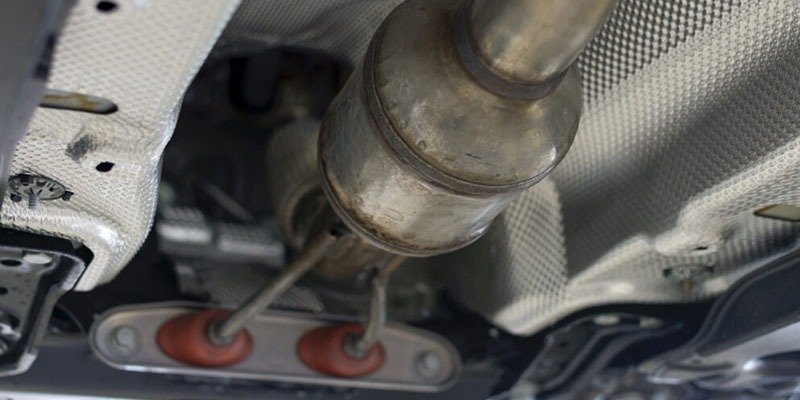
If you suspect your catalytic converter is clogged, there are a few symptoms to watch out for.
First, you may experience engine issues such as difficulty starting the engine, sputtering and stalling out, or an engine knocks at slower speeds. These can all be signs of a blocked/clogged catalytic converter.
Additionally, fuel efficiency may dive due to the blockage in the catalytic converter causing your engine to work harder and consume more fuel. Finally, you may notice a strong smell of gasoline coming from the exhaust pipe. It is due to the unburned fuel being released through the tailpipe.
It’s important to pay attention to these warning signs and address them quickly if they arise. If left unchecked, a clogged catalytic converter can cause serious damage to your vehicle’s engine and exhaust system.
Regular maintenance of your vehicle is key in preventing this issue from occurring in the first place. Ensure you follow the manufacturer’s recommended service schedule for your vehicle so that any potential problems with the catalytic converter can be addressed before they become major issues.
What happens when the catalytic converter gets clogged?
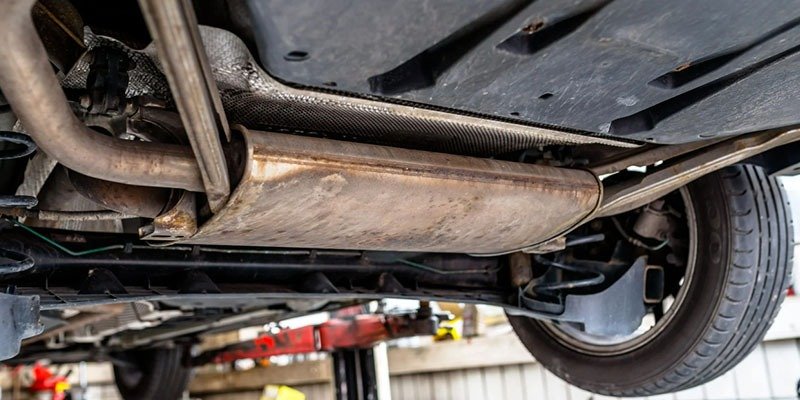
Unfortunately, when the catalytic converter becomes clogged or otherwise damaged, it can no longer do its job properly and will release more pollutants into the environment. It can also decrease your car’s fuel efficiency and potentially damage your engine.
How to unclog a catalytic converter?
Before attempting to unclog a catalytic converter, it’s important to ensure it isn’t beyond repair. If you need more clarification, you should consult a mechanic for confirmation. Once you know that the problem is simply debris buildup, there are two ways to go about unclogging it:
1. Removing and cleaning the converter
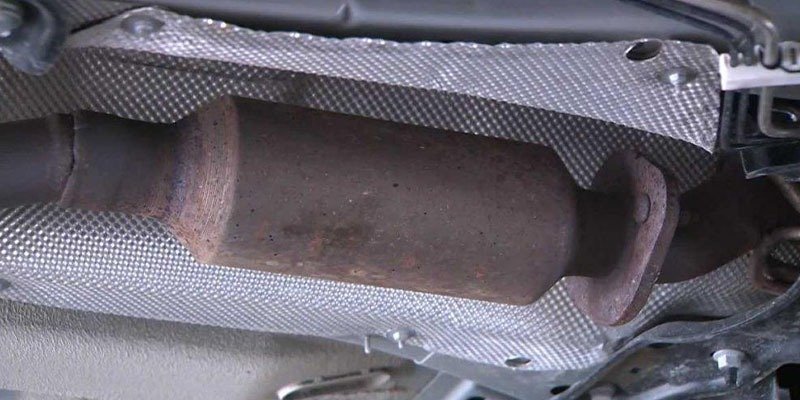
The first step is to remove any parts of the exhaust system that need to be cleaned. Ensure your exhaust system has had time to cool down before you begin work to avoid burns properly. Once you’re sure you aren’t risking burned skin, raise your vehicle on jack stands and remove the oxygen sensor. Next, apply the penetrating oil around the bolts holding the catalytic converter to loosen them.
Once loosened down, remove the catalytic converter and clean it thoroughly.
2. Using a catalytic converter cleaner in your fuel tank
Cleaning your catalytic converter without removing it is a great way to save time and money. The first step is to purchase a catalytic converter cleaner specifically designed for your vehicle’s system. Catalytic converter cleaners typically come as a fuel additive you pour into your fuel tank.
When choosing a cleaner, make sure it works for your vehicle’s systems and read the reviews! There are a lot of brands out there, so narrowing them down will help you make the selection.
Once you have chosen the right cleaner, follow the instructions on the package carefully. Make sure to add the correct amount of cleaner and drive around for at least 15 minutes to allow it to circulate throughout your engine.
After this, you should enjoy improved performance from your catalytic converter without having to remove it from your car. Cleaning without removing can be an easy and cost-effective way to keep your car running smoothly.
Whichever method you choose, make sure that you follow all safety precautions and instructions carefully to avoid any further damage or injury.
What leads to a clogged Catalytic Converter?
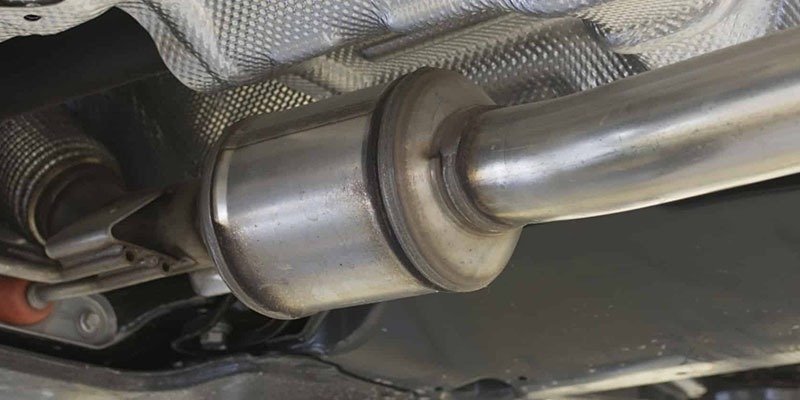
The most common cause of a clogged catalytic converter are:
1. Accumulation of particles from exhaust smoke.
These particles can build up over time and eventually block the flow of exhaust gases, leading to decreased engine performance and increased emissions. In addition, certain types of fuel additives can also contribute to the buildup of these particles, resulting in a clogged catalytic converter.
2. Structural Damage
Structural damage to a catalytic converter can be a serious issue. The catalyst honeycomb, crafted from fragile ceramic material, is particularly vulnerable to damage. If the honeycomb’s structure has been weakened, it may fracture and break into pieces while driving. It can lead to an interruption in exhaust flow, increased back pressure, and a clogged catalytic converter.
3. Oil leak
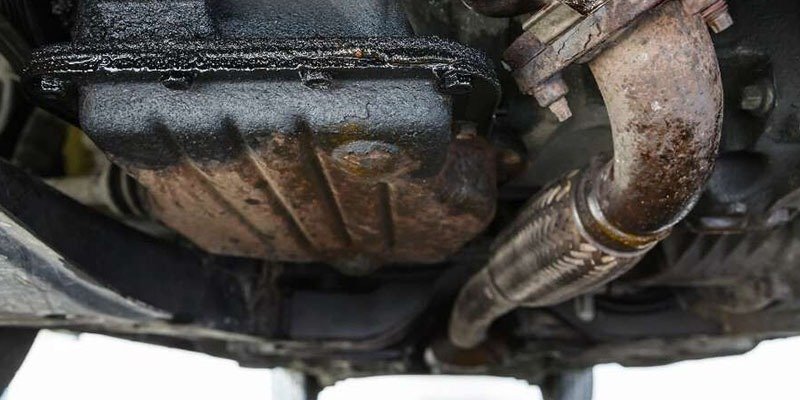
If oil leaks onto the hot surface of the converter, it can form a thick sludge that blocks the flow of exhaust gases. This sludge can also contain metal particles that further contribute to the blockage.
Additionally, suppose there is excessive fuel entering the combustion chamber. In that case, this can lead to unburned fuel passing through the exhaust system and accumulating in the catalytic converter, causing it to become clogged.
4. Leaking Coolant or Antifreeze
Suppose coolant can make its way into the exhaust system and mix with carbon deposits to form thick soot that builds up on the converter’s air filter. This blockage prevents the converter from filtering harmful emissions and restricts exhaust flow. Over time, this buildup can cause a clogged catalytic converter and increase back pressure, damaging your engine.
5. Damaged Spark Plugs
When spark plugs become damaged or misfire, it leads to unburned fuels. This fuel may make its way into the exhaust system, resulting in decreased performance and increased emissions. It can also lead to blockage in the catalytic converter, further reducing engine efficiency and increasing emissions.
How to diagnose a clogged Catalytic Converter?
Diagnosing a clogged catalytic converter can be a tricky process, but it is important to do so to ensure your car is running properly. The first step in diagnosing a clogged catalytic converter is to look for the symptoms that indicate this problem.
Common signs of a clogged catalytic converter include
- Reduced engine power,
- Increased fuel consumption, and
- An illuminated check engine light.
If any of these symptoms are present, then it is likely that the catalytic converter needs to be checked.
What are the suggested tools to check clogged catalytic converters?
Suggested tools to find the clogged catalytic converter include an OBD-II scanner, a vacuum gauge, and a back pressure tester.
- An OBD-II scanner can be used to read the codes stored in your car’s computer system, which can help you pinpoint the exact cause of the problem.
- A vacuum gauge and a back pressure tester can measure the amount of exhaust flow coming out of the catalytic converter. If the flow is significantly reduced, then it is likely that the catalytic converter is clogged.
Once you have determined that the catalytic converter is clogged, you can take steps to unclog it.
What are the diagnostic methods for testing your catalytic converter?
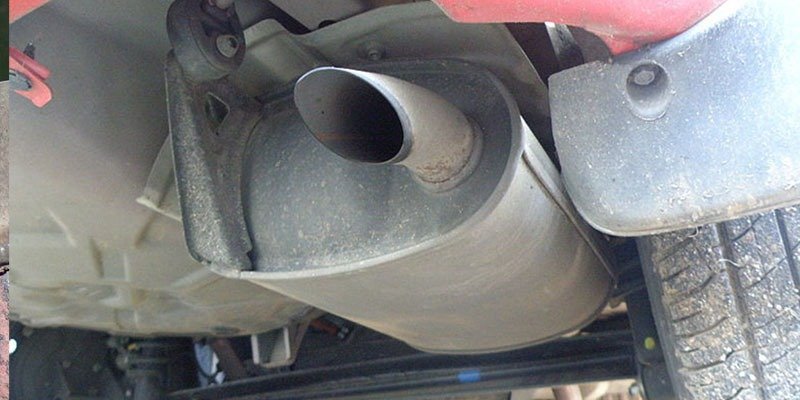
Here are the two diagnostic methods for testing the clogging status of your catalytic converter:
1. Vacuum Testing
The vacuum test is a great way to check the health of your catalytic converter. This diagnostic method requires a vacuum gauge and a driving partner. Begin by attaching the vacuum gauge to a direct intake manifold or another similar direct vacuum line.
After turning on your vehicle and allowing it to warm to its normal operating temperature, the vacuum gauge should show a value between 18 and 22 inches of mercury (in-Hg). If the reading is lower than this range, it could indicate an issue with your catalytic converter.
To get an accurate reading, you’ll need to drive your vehicle for at least 15 minutes while monitoring the readings on the vacuum gauge. If you notice any changes in the readings during this time, it could indicate something wrong with your catalytic converter.
It’s important to address any issues with your catalytic converter as soon as possible to avoid further damage or costly repairs down the road.
2. Temperature Testing
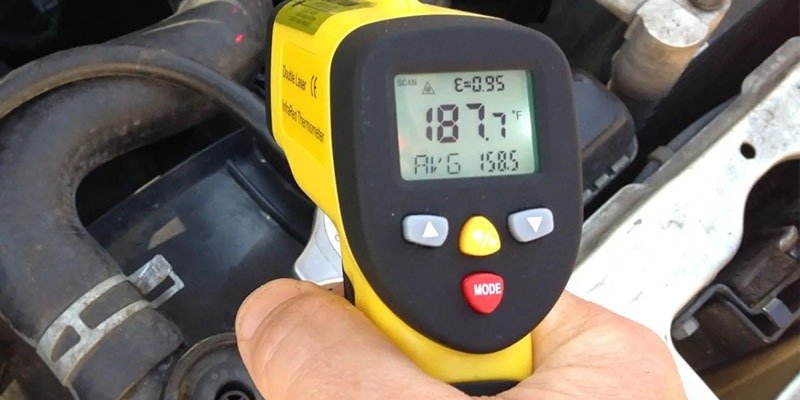
The temperature test of a catalytic converter is an important step in ensuring that your car is running properly. To begin, you will need to park your car on level ground and let it idle until it reaches its normal operating temperature. It can take anywhere from five to twenty minutes, depending on the make and model of your vehicle.
Once the engine has reached its normal operating temperature, you will need to use jack stands to support the car before taking the temperature of the inlet pipe connected to the front of the catalytic converter. It is important to note this temperature to compare it with other readings taken later on.
If there is a significant difference between the initial reading and subsequent readings, this could indicate a problem with your catalytic converter. In some cases, it may be necessary to replace or repair the part if it is not functioning correctly.
Conclusion
It is also important to keep an eye out for any unusual smells or smoke from your exhaust system, as this could indicate a problem with your catalytic converter. By performing regular tests such as these, you can ensure that your car remains safe and reliable for many years.

My Name is Christopher Angels, and I am a postgraduate in mechanical engineering. Cars have always excited me as a child, and soon I decided to dive into the world of cars by pursuing mechanical engineering. I also worked as a Mechanic for over 3 years to understand Cars’ anatomy and how each part contributes to its working.
My Name is Christopher Angels, and I am a postgraduate in mechanical engineering. Cars have always excited me as a child, and soon I decided to dive into the world of cars by pursuing mechanical engineering. I also worked as a Mechanic for over 3 years to understand Cars' anatomy and how each part contributes to its working.

